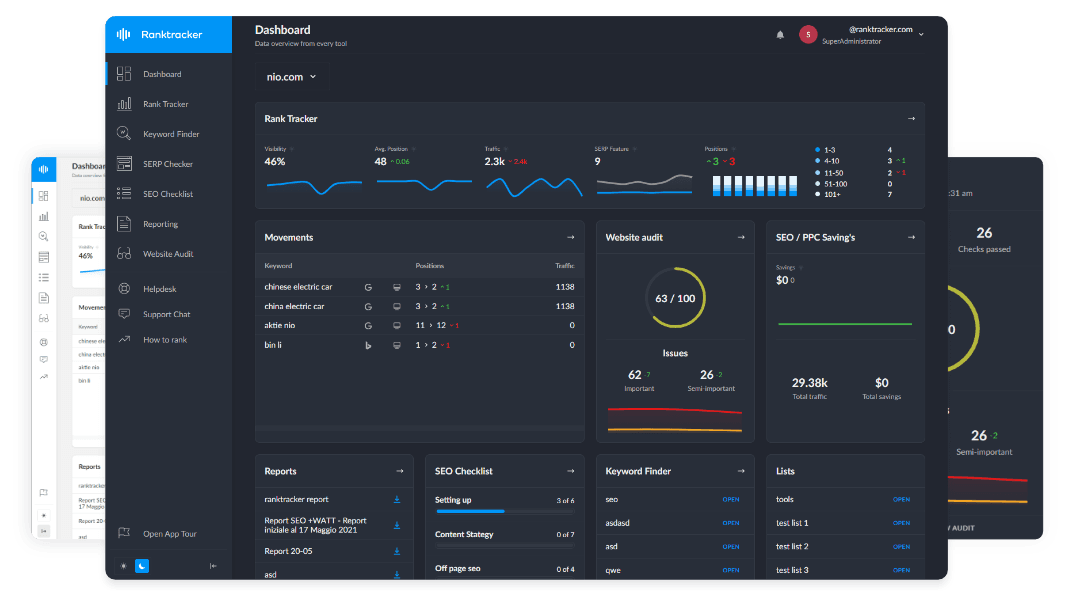Intro
Intent templates are predefined query structures that represent common search intents. Search engines analyze these patterns to determine whether a user is looking for information, a product, a service, or navigation. By optimizing content for these templates, websites can align better with search intent and improve rankings.
Why Intent Templates Matter for SEO:
- Help search engines categorize queries accurately.
- Improve content optimization by targeting high-intent search patterns.
- Increase organic visibility by aligning with structured query formats.
How Search Engines Use Intent Templates
1. Intent Classification & Query Structuring
- Google sorts queries into informational, navigational, commercial, and transactional intents.
- Example:
- "How to rank higher on Google" → Informational intent.
- "Best SEO tools for beginners" → Commercial intent.
- "Buy Ranktracker SEO subscription" → Transactional intent.
2. Query Expansion & Synonym Matching
- Search engines match query variations based on predefined intent templates.
- Example:
- "SEO software comparison" → Matched with variations like "Best SEO tools vs. Ranktracker".
3. Featured Snippets & SERP Optimization
- Intent-driven queries often trigger featured snippets, listicles, and FAQ sections.
- Example:
- "Steps to do keyword research" → Google may highlight a numbered list.
4. Voice Search & Conversational Intent Matching
- NLP models interpret voice-based queries using intent templates.
- Example:
- "What’s the best SEO tool for agencies?" → Google maps it to "Top SEO platforms for agencies."
5. Personalized & Contextual Search Refinement
- Google refines user queries based on previous searches.
- Example:
- "Buy laptop online" → Filtered to "Best laptop deals 2024."
How to Optimize Content for Intent Templates
✅ 1. Identify & Target High-Intent Queries
- Research common query structures in your niche.
- Example:
- "How to + [Action]" (How to optimize a website).
- "Best + [Product] + for [Use Case]" (Best SEO tools for agencies).
✅ 2. Structure Content for Intent-Based Queries
- Align content with search intent and predefined templates.
- Example:
- Informational intent: "What is technical SEO?"
- Transactional intent: "Buy SEO software subscription."
✅ 3. Optimize for Featured Snippets & FAQ Schema
- Use lists, step-by-step guides, and structured Q&A formats.
- Example:
- "Checklist for on-page SEO optimization."
✅ 4. Leverage Long-Tail Keywords & Natural Language Queries
- Optimize for voice search and conversational intent templates.
- Example:
- "What’s the fastest way to improve my Google ranking?"
✅ 5. Strengthen Internal Linking Based on Intent
- Link informational content to transactional and commercial pages.
- Example:
- "What is SEO?" page linking to "Best SEO tools" and "Buy Ranktracker subscription."
Tools to Optimize for Intent Templates in SEO
- Google Search Console – Track queries based on search intent.
- Ranktracker’s Keyword Finder – Discover high-intent keyword structures.
- Ahrefs & SEMrush – Analyze SERP intent and competitor strategies.
Conclusion: Leveraging Intent Templates for SEO Success
Understanding and optimizing for search intent templates helps websites rank better, attract relevant traffic, and enhance user experience. By structuring content around informational, commercial, and transactional search patterns, SEO professionals can boost organic visibility and conversions.

